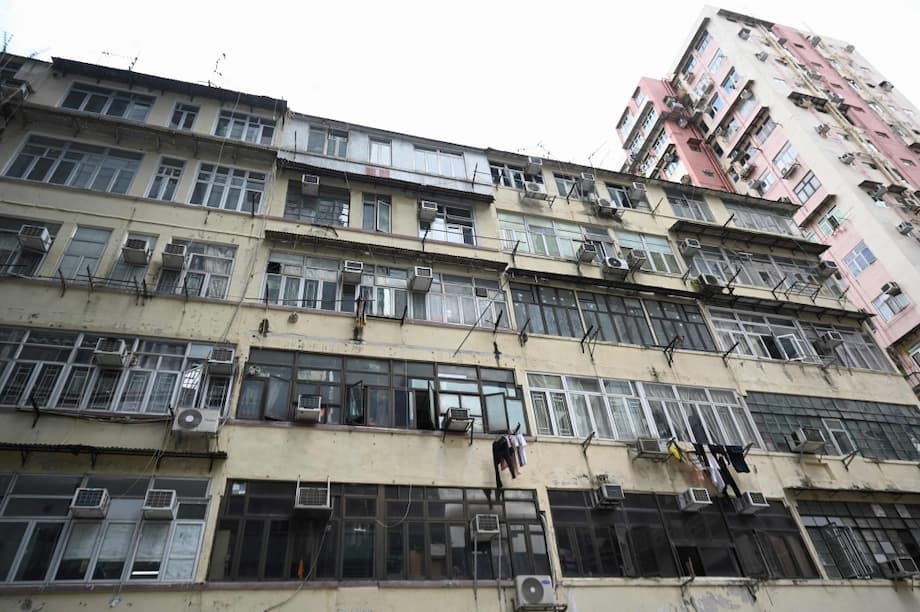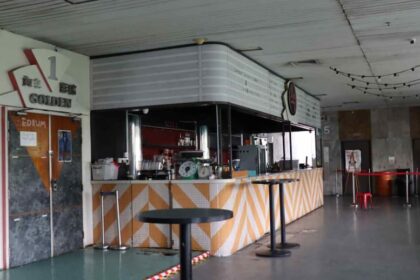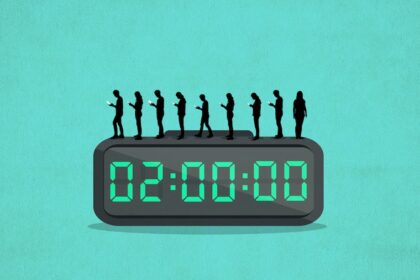Why Hong Kong Is Moving to Regulate Shoebox Flats
Hong Kong is moving to end the era of shoebox flats by setting a legal baseline for what counts as a safe and decent subdivided home. The new regime begins in March 2026 and targets cramped and unsafe units that have long stood in for affordable housing in one of the worlds costliest cities.
- Why Hong Kong Is Moving to Regulate Shoebox Flats
- What the Basic Housing Unit Law Requires
- How Registration and Enforcement Will Work
- How Many Homes Are Affected
- Impact on Landlords and the Rental Market
- Government Response and Housing Supply
- Safety and Health Concerns
- Tenant Rights and What To Do Now
- Why Shoebox Flats Became So Common
- What Happens Next
- Key Points
Lawmakers approved the Basic Housing Units Bill in late September, and the ordinance was gazetted on October 3, 2025. It creates a registration and recognition system for subdivided flats and gives landlords a clear timetable to upgrade or close substandard units. Renting out an unrecognised unit will become an offense in 2027, with heavy penalties, and a final compliance deadline arrives in 2030.
The scale of the challenge is large. Officials say about 110,000 subdivided flats exist across the city, housing roughly 220,000 residents. Many are carved out of old walk up blocks with shared facilities and poor ventilation, and some measure as little as 50 square feet. High land prices, a tight supply of residential land, and long waiting times for public rental housing allowed these partitions to proliferate despite widespread concern over safety and hygiene.
What the Basic Housing Unit Law Requires
The law sets minimum living standards that every subdivided unit must meet before it can be rented out as a recognised Basic Housing Unit. Each unit must be at least 8 square meters in floor area, have a ceiling height of 2.3 meters, include at least one openable window, and provide an enclosed private toilet and a sink inside the unit. The ordinance also lays down requirements for lighting, ventilation, and key safety features.
Beyond space and basic fixtures, compliance will involve fire and structural safety standards as well as separate water and electricity meters so that tenants are not forced to share or pay arbitrary charges. Units that meet the standards can seek recognition, which confirms that the flat can be let legally. Those that do not meet the standards must be rectified or returned to their original layout.
How Registration and Enforcement Will Work
The new ordinance comes into effect on March 1, 2026. From that date, all landlords who let subdivided units must register them within a 12 month window. Once the registration period ends in March 2027, it becomes an offense to rent out an unregistered or unrecognised unit. Inspections will back up the regime, and authorities will have powers to issue rectification notices for works that bring each home up to code.
Landlords who register on time will have a grace period of 36 months, from March 2027 through February 2030, to complete required improvements and obtain recognition. Renting out an unrecognised unit after the offense date can lead to fines of up to HK$300,000 and imprisonment for up to three years, with daily penalties possible for continued breaches. To drive early participation, officials plan to waive or reduce fees in the early years of the scheme, then move to standard charges later. Recognition will be valid for a fixed term and will need renewal, with inspections and compliance checks continuing over time.
How Many Homes Are Affected
The government estimates that roughly one third of subdivided flats fall short of the new baseline. The most common failing is floor area under 8 square meters, but some units also lack openable windows or adequate ceiling height. As units are upgraded or shuttered, officials expect a substantial share to remain. Housing authorities have suggested that about 80,000 units could continue to operate once they meet the new standards.
Conditions can be harsh in the current stock. Many subdivided homes sit inside ageing walk up buildings with outdated wiring and cramped common areas. Some residents share facilities with several other households. Windowless rooms are common, and the average living space can be around 65 square feet per person in the smallest set ups. Fire hazards and poor ventilation have drawn repeated public concern.
Impact on Landlords and the Rental Market
Operators say compliance will be expensive and sometimes technically impossible. Building out a private toilet, adding ventilation, or meeting the window requirement can cost large sums, and not every floorplan allows for it. Renovation firms have quoted around HK$150,000 to upgrade a single unit in some cases. Some operators have already shut units they expect to fail, while others plan to merge partitions back into a single tenancy.
Rents are a central worry. Many low income households rely on the cheapest units in the market, including homes under HK$5,000 a month. Advocates warn that the smallest and least costly spaces could disappear if a chunk of supply exits during the clean up, and that landlords might try to recover refurbishment costs through higher asking rents for new leases. In practical terms, a unit of around 75 square feet that might rent for about HK$4,500 today could vanish, while larger units in the 110 to 130 square foot range could become the entry level option at higher monthly prices.
Existing rent control for subdivided flats will blunt some pressure but not all of it. Under tenancy control that took effect in 2022, tenants receive four years of security of tenure in two successive two year terms, rent hikes on renewal are capped at 10 percent and linked to an official rental index, increases are not allowed within the first two year term, and landlords are barred from overcharging for utilities and basic services. There is no cap on a starting rent for a new tenancy, which means the price of newly compliant units could still reset higher if demand outstrips supply.
Government Response and Housing Supply
Officials argue that rental pressure will be limited by a pipeline of public and transitional housing. The Secretary for Housing, Winnie Ho Wing yin, has said the rental market will not have much room for growth given the coming supply of public homes and the expansion of short term projects like Light Public Housing. Government data indicates that more than 40 percent of subdivided unit households have applied for public rental housing, and around 20 percent are eligible but have not yet submitted applications. The long term aim is to eliminate substandard subdivided housing by 2049 while expanding the public housing stock to reduce waiting times.
The Housing Bureau has framed the regulatory overhaul as a step toward basic human dignity for residents who have endured unsafe and unsanitary conditions. In an official policy note, the bureau summed up the purpose of the ordinance:
The current term Government is committed to reform and embraces changes. This aims to ensure the provision of safe, hygienic and reasonable living conditions in SDUs.
Officials have also indicated they may apply the window requirement with some flexibility in special settings, taking air quality and hygiene into account, while keeping the focus on safety, ventilation, and health. The message is that the new standard is firm, yet implementation will be practical where on site constraints make certain features hard to achieve.
Safety and Health Concerns
Public pressure for action has been driven by safety. Subdivided flats can conceal structural changes that weaken buildings, block escape routes, and create fire risks. Improvised wiring, overloading of circuits, and a lack of smoke control have led to tragic incidents in older blocks. A deadly building collapse in 2010 and a fatal blaze in Jordan in 2024 deepened concern about hidden hazards inside older tenements.
Hygiene is another driver. Overcrowding, shared washrooms, poor air circulation, and damp interiors lead to mold and pests. Units without windows or with fixed panes trap heat and odors, which is especially hard on elderly residents and children. The ordinance moves minimum standards for ventilation, lighting, and sanitation into law so that such conditions are no longer tolerated as a default for those who cannot afford a conventional flat.
Tenant Rights and What To Do Now
Tenants will not face criminal liability for living in an unrecognised unit. Penalties target those who let out unrecognised or non compliant flats. If you live in a subdivided home, ask your landlord about plans to register in 2026 and to obtain recognition after upgrades. Keep copies of your tenancy agreement and receipts. Make sure your landlord bills utilities based on separate meters and at the official rate.
Tenancy control rules that began in 2022 give a measure of stability. They provide four years of security of tenure in two successively renewed terms, limit rent increases on renewal to no more than 10 percent and tie them to an official rental index, and bar increases during the first two year term. They also prohibit overcharging for utilities. If you are pressured to leave or face an abrupt rent jump outside of these rules, seek help from the Rating and Valuation Department or community groups that assist tenants.
Why Shoebox Flats Became So Common
Hong Kong has had some of the worlds highest home prices for years, while only a small share of land is zoned for residential use. The result is a structural mismatch between demand and the supply of affordable homes. Many older neighborhoods are filled with mid century walk up buildings that were easy to subdivide into tiny rooms. Students, new arrivals, and elderly residents have often turned to these rooms because market rate apartments are out of reach and public housing waits can stretch for years.
For landlords and operators, the business has been lucrative. A single 900 square foot apartment can be split into five or six rooms, each bringing a separate rent, and the total rent often exceeds what a single household would pay for the same flat. That incentive structure, combined with weak oversight in the past, encouraged more partitioning. Bringing those homes back up to standard weakens the financial case for the smallest rooms, which is why the government is pairing regulation with more public housing.
What Happens Next
The timeline is set. The ordinance takes effect on March 1, 2026, and registration opens at once with a one year application window. From March 2027, it is an offense to rent out an unregistered or unrecognised subdivided flat. Landlords then have until February 2030 to complete rectification works and obtain recognition or convert their properties back to a conventional layout. Authorities say inspection and enforcement will scale up in 2027, and fees will be waived or reduced at the start to pull owners into the system before full charges apply later.
Advocates will be watching whether enforcement is strong and whether the wider housing pipeline arrives on time. If the public and transitional supply ramps up as planned, pressure on subdivided rents could ease even as substandard units disappear. If it lags, tenants at the bottom of the market could face hard choices. The next 24 to 48 months will show whether a regulatory solution paired with new supply can finally end the citys reliance on unsafe partitions.
Key Points
- New ordinance creates Basic Housing Units and bans units under 8 square meters with effect from March 2026.
- Every unit must have an openable window, a private enclosed toilet and sink, and meet fire, structural, lighting, and ventilation standards.
- Registration opens March 1, 2026, with a 12 month window for landlords to enter their properties into the system.
- From March 2027, renting out an unregistered or unrecognised unit becomes an offense.
- Landlords have until February 2030 to rectify and obtain recognition or restore original layouts.
- Penalties can reach HK$300,000 and three years in prison, with possible daily fines for ongoing breaches.
- About 110,000 subdivided flats house roughly 220,000 residents, and around one third are estimated to be substandard.
- Officials expect roughly 80,000 units to remain after upgrades or closures, while public and transitional housing supply is set to increase.
- Tenancy control for subdivided flats limits rent hikes on renewal to 10 percent and bars increases in the first two year term.
- Tenants are not criminally liable under the new regime, which targets those who let out non compliant units.












